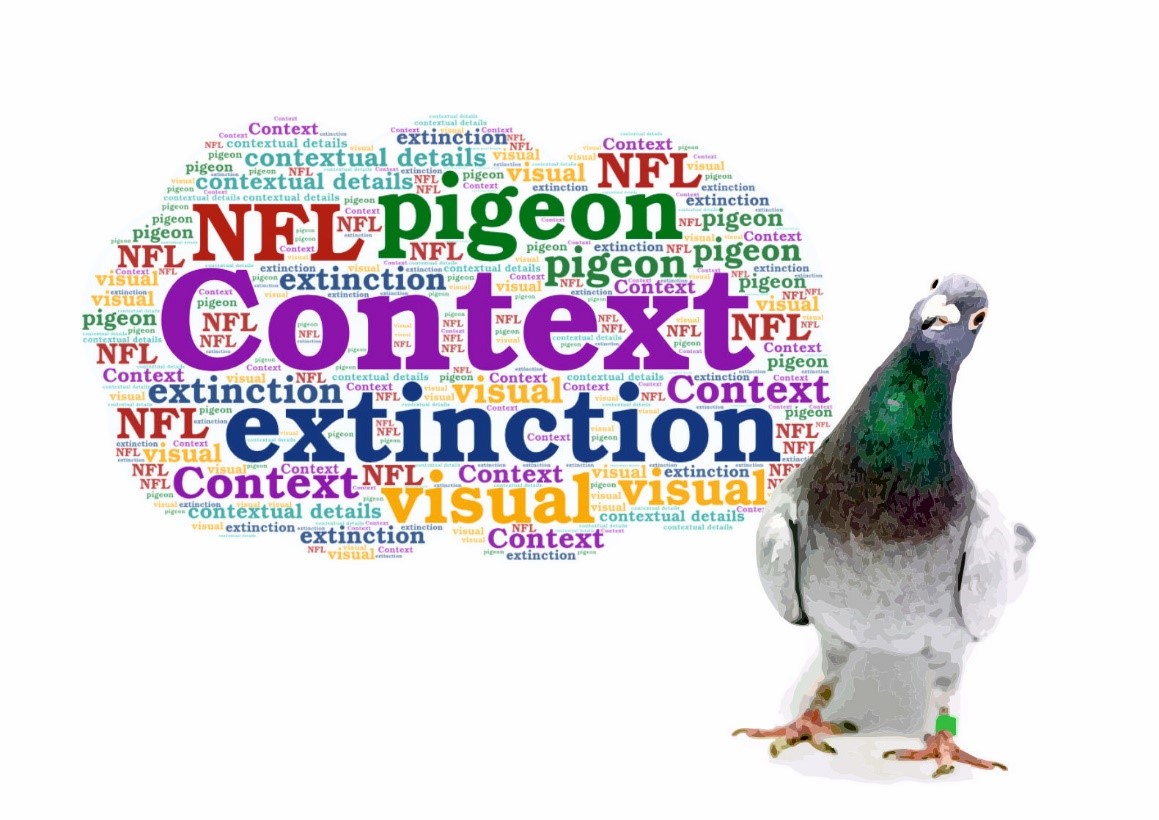2019-02-22

The phrase ‘two eyes with wings’ from Rochon-Duvigneaud (1943) most vividly describes pigeon’s visual abilities and their visual dependence in perceiving the environment. The nidopallium frontolaterale (NFL) is one of the most important visual structures in the pigeon brain and converges information from the avian tectofugal and thalamofugal pathways. It is therefore interesting to see whether this visual structure is involved in extinction learning, the fundamental learning mechanism in adaptation to the changing situations. We recruited a within-subject appetitive extinction design, and found out that transient inactivation of the NFL during extinction did not induce any perceptual impairment, but the extinction acquisition was mildly deteriorated. It implies that the encoding of extinction memory entailed the activation of NFL. In addition, rendering inactivation in the NFL during extinction results in an abolishment of the renewal effect, which indicates that NFL is essential in context encoding, possibly in the process of forming specific context-CS-configurations. Hopefully, this species-specific role of NFL in extinction learning may spark new interests in revisiting the mammalian visual cortices in the process of extinction learning.
Gao, M., Lengersdorf, D., Stüttgen, M. C., & Güntürkün, O. (2019). Transient inactivation of the visual-associative nidopallium frontolaterale (NFL) impairs extinction learning and context encoding in pigeons. Neurobiology of Learning and Memory, 158(October 2018), 50–59. https://doi.org/10.1016/j.nlm.2019.01.012

The phrase ‘two eyes with wings’ from Rochon-Duvigneaud (1943) most vividly describes pigeon’s visual abilities and their visual dependence in perceiving the environment. The nidopallium frontolaterale (NFL) is one of the most important visual structures in the pigeon brain and converges information from the avian tectofugal and thalamofugal pathways. It is therefore interesting to see whether this visual structure is involved in extinction learning, the fundamental learning mechanism in adaptation to the changing situations. We recruited a within-subject appetitive extinction design, and found out that transient inactivation of the NFL during extinction did not induce any perceptual impairment, but the extinction acquisition was mildly deteriorated. It implies that the encoding of extinction memory entailed the activation of NFL. In addition, rendering inactivation in the NFL during extinction results in an abolishment of the renewal effect, which indicates that NFL is essential in context encoding, possibly in the process of forming specific context-CS-configurations. Hopefully, this species-specific role of NFL in extinction learning may spark new interests in revisiting the mammalian visual cortices in the process of extinction learning.
Gao, M., Lengersdorf, D., Stüttgen, M. C., & Güntürkün, O. (2019). Transient inactivation of the visual-associative nidopallium frontolaterale (NFL) impairs extinction learning and context encoding in pigeons. Neurobiology of Learning and Memory, 158(October 2018), 50–59. https://doi.org/10.1016/j.nlm.2019.01.012